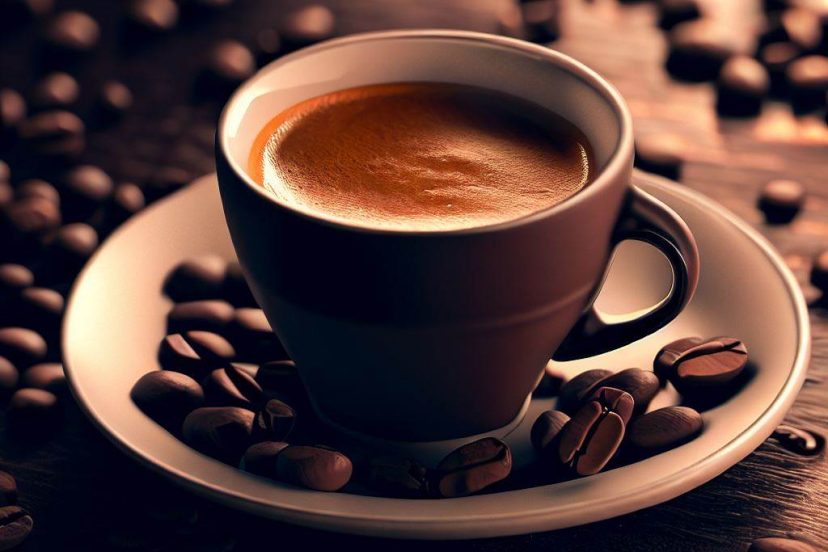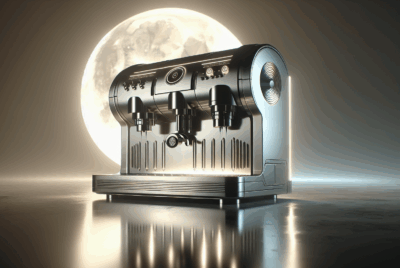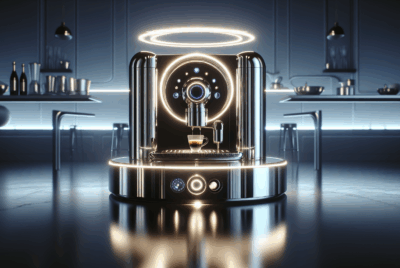Best Coffee Beans For Espresso: From Bean to Cup
As an Amazon Associate, I earn from qualifying purchases, at no additional cost to you. Disclaimer
Introduction
Hello, fellow coffee lovers! I’m here to guide you on your journey to discover the best coffee beans for espresso. So, let’s brew this topic together, shall we?
What is Espresso?
Espresso, as many of you might already know, is a full-flavored, concentrated form of coffee that serves as the foundation of various coffee drinks. It’s not the type of beans, but the brewing method that defines it. But the choice of beans can significantly affect your espresso’s quality.
Types of Coffee Beans
Choosing the right coffee beans can be a journey of discovery, especially when you’re just starting to make espresso at home. There’s a wide world of flavors, textures, and origins to explore.
Arabica Coffee Beans
Ah, Arabica! Often known as the ‘queen of beans,’ it’s the one type that stands out in any coffee conversation.
Origin of Arabica
This delicate variety, often considered the darling of coffee aficionados, traces its roots back to Ethiopia. I recall my first encounter with these beans – it was a packet gifted by a dear friend who had visited an Ethiopian coffee plantation. That was my introduction to home-brewed espresso, and oh boy, was it a revelation!
Taste of Arabica
These beans are a treat for the taste buds. They typically have a softer, sweeter taste with a delightful acidity, making for a well-rounded espresso shot. Arabica beans often possess subtle flavors of sugar, fruit, and berries. Remember the first time I made espresso using Arabica beans, the sweet aroma filled my kitchen, instantly transporting me to those artisan coffee shops. If you are someone who appreciates the nuanced flavors and doesn’t mind a slightly higher price, Arabica should be your go-to option.
Robusta Coffee Beans
If Arabica is the queen, then Robusta is the hardy king of the coffee kingdom.
Origin of Robusta
Robusta coffee beans, true to their name, are robust and resilient, originating from Sub-Saharan Africa. They’re much easier to cultivate and have a higher yield compared to Arabica, hence they are cheaper and more commonly found in the market.
Taste of Robusta
Taste-wise, they pack a punch! They are less acidic and have a deeper, intense flavor compared to Arabica, with a distinct nutty and chocolatey aftertaste. Not to mention, they have almost double the caffeine content, offering a real wake-up jolt. I remember my switch from Arabica to Robusta. It was during my finals week in college, and I needed something strong to keep me up at night. My very first espresso with Robusta did the trick. So if you’re a fan of bold, full-bodied coffee and looking for an affordable choice, Robusta is for you!
Remember, there’s no right or wrong when it comes to choosing between Arabica and Robusta. It’s all about personal preference. So, take your time, experiment with both, and find your sweet spot.
Choosing the Best Coffee Beans for Espresso
As a passionate espresso lover, choosing the right beans is a fascinating journey and an essential step in brewing that perfect cup at home. And believe me, once you get a taste for it, there’s no going back!
Factors to Consider
There are several factors that you should consider in this journey. Let’s delve into them one by one.
Bean Origin
The origin of coffee beans makes a world of difference to your espresso. It’s quite similar to the terroir of wine, with the climate, soil, and altitude of the region playing a significant role in the flavor profile. My advice? Try single-origin beans from different regions and countries to see which ones you prefer. I remember trying a Columbian roast for the first time – it had a vibrant, fruity flavor that was entirely unique!
Roast Type
The roast type is another crucial element based on techniques, temperatures and methods. Espresso usually calls for a medium to dark roast, as they tend to deliver the perfect balance of flavor and acidity. Light roasts can be a bit too acidic for espresso, while very dark roasts might give you a hint of bitterness. That said, personal preference is key! If you’re unsure, a medium roast is a good starting point – that’s what I used when I was starting, and it never let me down.
Freshness
Just like a loaf of bread, coffee beans are at their best when they’re fresh. Look for beans with a roast date and try to use them within a month of this date. Trust me, it makes a difference! I once used an old bag of beans I found at the back of my cupboard, and the flavor was flat and uninteresting – never again!
Flavor Profile
Finally, we have the flavor profile. This might sound complicated, but it’s really about understanding what flavors you enjoy in your coffee. Do you like nutty or chocolatey notes? Or perhaps you prefer fruity and acidic undertones? Maybe you’re not sure yet, and that’s okay! Experiment with different beans and see what hits the spot. Personally, I have a soft spot for a bean with caramel and berry notes – it adds a touch of sweetness that makes my morning espresso just right.
Top Picks for Best Coffee Beans for Espresso
As you venture into the art of home-brewed espresso, knowing where to start can be a challenge. Here, I’ll share a few of my personal favorite beans that have never failed to brew a delicious cup of espresso.
Lavazza Super Crema Espresso: This is a blend of Arabica and Robusta, which is perfect for those who are just beginning their espresso journey. The Lavazza Super Crema strikes a delightful balance, giving you the sweetness of Arabica and the punchy caffeine hit of Robusta.
Kicking Horse Coffee, Cliff Hanger Espresso: This one is a medium roast, 100% Arabica, which makes a smooth, fruity espresso with a bright finish. It’s a bit pricier, but worth every penny. I treated myself to this one for my birthday one year, and it felt like an espresso party in my mouth!
Death Wish Coffee: With a name like that, you can expect a high-caffeine jolt. This dark roast combines Arabica and Robusta beans for a bold, intense flavor. Perfect for those long nights when sleep is the last thing on your mind. I found this one during my university finals week, and it literally saved my grades.
Stumptown Coffee Roasters Hair Bender: This one has a unique blend of beans from all three coffee-growing regions: Latin America, Africa, and Indonesia, offering a complex flavor profile. I got this as a gift from a friend, and I’ve been in love with it since the first sip!
Remember, these are just a few of the fantastic options out there.
Conclusion
Choosing the right coffee beans can transform your espresso experience. The best part about making espresso at home is the adventure of tasting and trying out a multitude of beans to discover what makes your taste buds dance. Your espresso journey will be filled with taste-testing and refining your preferences, so keep an open mind and have fun with it!
Happy brewing!
-Carla
Frequently Asked Questions (FAQs)
1. What’s the difference between Arabica and Robusta coffee beans?
Arabica beans are typically more delicate with a sweeter, softer taste, and notes of sugar, fruit, and berries. They are also higher in acidity with a winey taste that characterizes coffee with excellent acidity. Robusta, however, has a stronger, harsher taste, with a grain-like overtone and peanutty aftertaste. They contain twice as much caffeine as Arabica beans, making them taste more bitter.
2. Why is the freshness of coffee beans important?
The freshness of coffee beans is crucial because coffee beans are perishable goods. As they age, they lose their aroma and flavor due to oxidation. To get the best flavor, it’s recommended to use coffee beans within a month of their roasting date.
3. How should I store my coffee beans for maximum freshness?
To keep your coffee beans fresh, store them in an airtight container at room temperature. Avoid clear canisters since light can compromise the taste of your coffee. Do not refrigerate or freeze your coffee beans as it could introduce moisture that can harm the flavor.
4. Does the type of grind matter for making espresso?
Yes, it certainly does. Espresso requires a very fine grind to ensure optimal flavor extraction. If the grind is too coarse, water will pass through too quickly, resulting in a weak and under-extracted espresso. If it’s too fine, water will struggle to pass through, resulting in over-extraction and a bitter taste.
5. Do I need special equipment to brew espresso at home?
Traditionally, espresso is made using an espresso machine. However, there are other methods available for those who do not own an espresso machine, like using an Aeropress or a Moka pot. Keep in mind that these methods may not produce the same intensity as machine-made espresso, but they can brew a delicious, strong cup of coffee.





